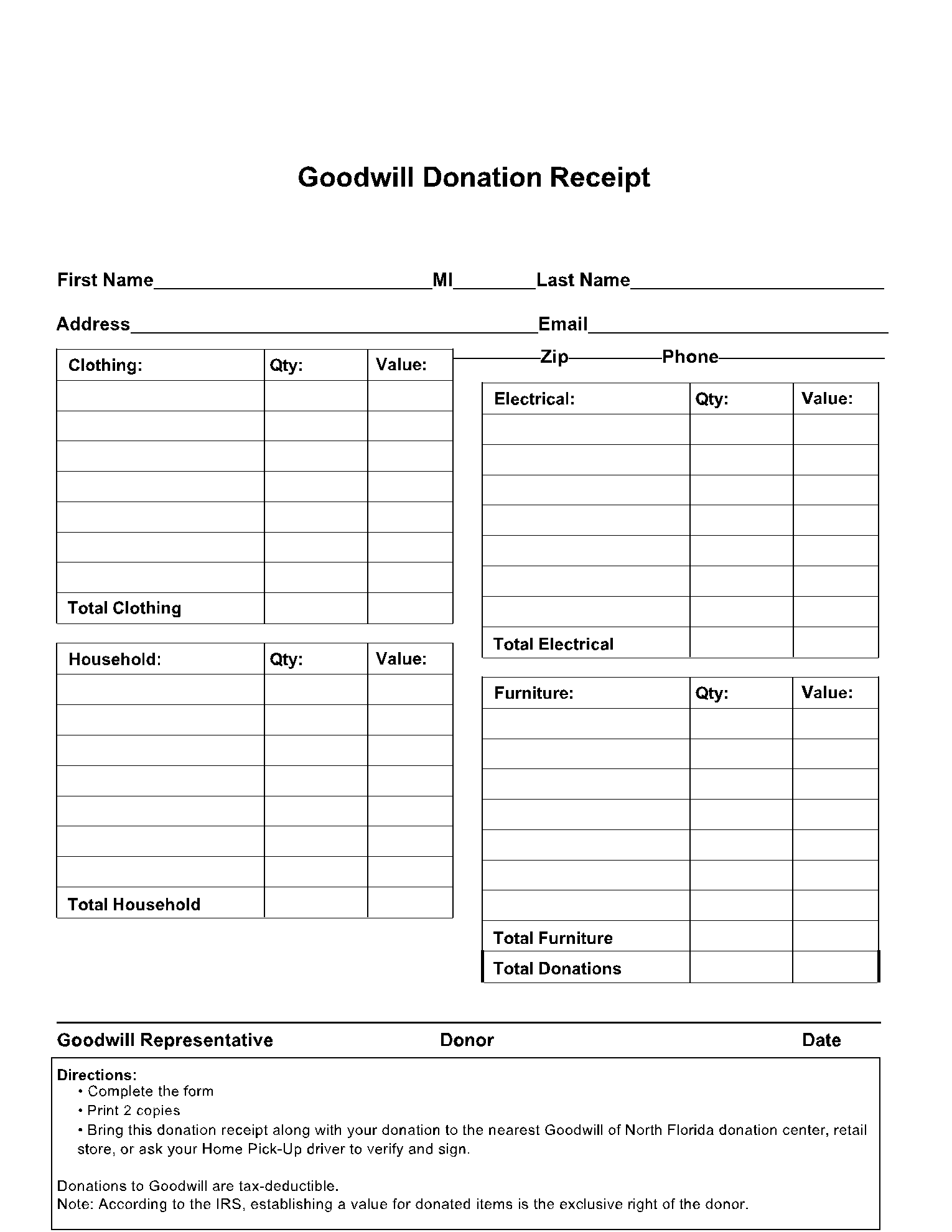Goodwill donations are widespread, but not only are they kind gestures that can help people in need, but they also have some benefits for the donor. When you give something to Goodwill, you can deduct the value of that donation from your taxes.
But to do that, you will need a Goodwill donation receipt. Once you make the donation, you will be asked to enter your personal information so that you can receive a Goodwill receipt.
What Is a Goodwill Donation Receipt?
When you donate to Goodwill, you receive a document called a Goodwill donation receipt that you could use to get tax deductions for the current fiscal year. The Goodwill donation form is a manifest of the items you have donated, with an estimation of the value.
It’s the official record of the household items you gave to charity, and you are the one in charge of establishing the value. You must also keep this Goodwill form for when you do your taxes.
What Can You Donate to Goodwill?
The Goodwill donation system is quite convenient for the donor, apart from gathering useful items for people in need.
But as it’s normal, there are a few recommendations regarding what you can donate. The donations are usually clothes and other items in the household, with the obvious condition that they must be in decent shape and usable.
Most of us have things around the house that we no longer need or want, but that are still in good condition and would make a positive change in someone’s life. You can give clothes, shoes, electronics, books, house ware, and any other useful item.
It’s the donor that decides the value that they mention in the Goodwill receipt; however, it’s not a good idea to exaggerate that value, since the Tax authority can conduct an audit in some cases.
What Should Be Included in a Goodwill Donation Receipt?
The Goodwill donation receipt is not a very complex document, but the information still needs to be clear and well organized, so it’s best to use a Goodwill donation receipt pdf, or an efficient template. Here is what should be included:
- A list of the items you donate and the quantity.
- The estimated value of each item.
- The donor’s identifying information: name and address.
- A recipient that the tax entity can check – the Goodwill outlet’s identification number.
Conclusion
Donating to charity organizations is a beautiful gesture, but it happens even more often if people have a small benefit from the donation. That’s why they get a Goodwill donation receipt that they can use to get tax deductions.
To make sure all the relevant information is included in the Goodwill receipt, you can use the template created by CocoSign. We have an excellent library of templates for all types of documents.
